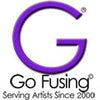
How to Use Microwave Kilns
We have combined information we have collected from all the manufacturers, test fires and tips from artists to create this tips and tricks on microwave kiln techniques. Please contact us if you find something missing so we can continue to improve this for your use.
Microwave Kilns are popular because in it only takes about 5 minutes to fully fuse a pendant in a medium 950 watt microwave and about 4 minutes or less in a 1200 watt microwave. But just because it is quick and fairly easy does NOT mean you should treat the process or equipment casually. Bottom line, you are creating molten glass that can reach temperatures of 1,600 degree F.
WHAT TO KNOW BEFORE PURCHASING a Microwave Kiln:
The microwave should be dedicated and not used for food as well.
- Do NOT lend your microwave kiln to anyone unless they have all of the materials.
- Only microwaves with metal interiors should be used as plastic will melt.
- Determine the wattage of your microwave. It will need to be 800 to 1200 watts.
- Determine if you can remove your glass tray and if you can deactivate the turntable from spinning. The temperature of a microwave kiln can break your glass shelf. Using kiln posts under a Microwave kiln can reduce this risk.
Note: turning while melting your glass is not a requirement
- Do not place the microwave under a kitchen cabinet or on any flammable materials
- You should plan on having a cooling rack or high heat resistant pad to allow the Micro kiln to cool between uses.
- You will need heat resistant gloves.
- You should use a ceramic fiber paper versus Kiln Wash between the glass and Micro kiln shelf. Always cut the shelf paper size to match your project with at least a ½ inch border extension but not in excess to avoid allowing the paper the possibility of catching fire.
MICROWAVE SAFETY ISSUES TO UNDERSTAND WHEN FUSING GLASS:
- Follow all manufacturer safety recommendations provided with the specific microwave kiln you purchased.
- Document and run test times before making projects in progression.
- Start with a small 1 inch square and 1 layer of clear, white and black glass.
- Start with a base 50% power run to warm the glass for 3 minutes and then add full power at 1 minute increments, check the glass in-between the additional minute added.
- Document condition of glass on a chart. Create a chart that look something like this:

FIRING TIPS: After your initial tests, it is better to do a full firing schedule and then if the results are not as expected, go thru a cool period and then fire again with any minute increases built in to the new firing schedules.
You cannot have constant firing of your Micro kiln, even if you are using multiple Micro kilns. The microwave should be allowed to cool between uses. Micro kilns should be allowed to cool at least 20 minutes between firings.
Continuous firing of a Micro kiln can cause damage and/or the microwave.
- All ways wear heat-resistant gloves and use both hands to take out the Micro kiln and place on a heat-resistant brick. REMEMBER glass that is cooling may look like cold glass but it is still hot and will burn so wait 20 minutes before moving.
- You should always keep your glass 1/2" away from the fusing chamber and you should not have your glass fill the entire chamber dimensions.
- NEVER leave the lid off your Micro kiln when firing your glass.
- We recommend only using non-toxic, lead free enamels so they are safe for wearing or in contact with food.
- Follow all manufacturer instructions provided with the specific microwave kiln you purchased.
- Kiln Shelf Paper is recommended over kiln washing and always between the glass and the shelf.
eneral Microwave Kiln Firing Schedule at 100% power: 
TIPS FOR FIRING PRECUT GLASS in a Microwave Kiln:
- ALWAYS make sure your glass is cleaned first, scrubbing the edges as well.
- You may also find that it is necessary to pre-fire pieces to gloss the edges before combining into a multi-layered piece to avoid a ghosting line around the edges. Particularly this is true with black glass.
- If you can turn or remove the light in the microwave you will more easily be able to see the glow of your Micro kiln but remember the microwave gets extremely hot and putting anything in the microwave to cover the light could catch fire. We recommend you leave the microwave light alone and to take the time to create a good reference chart so you will know your kiln’s firing abilities.
-When you remove your Micro kiln, after firing, NEVER immediately remove the lid or can shock the glass and result in breakage. Annealing takes a minimum of 30 minutes but this depends upon the thickness of the glass.
Be Safe and Have Fun Fusing Glass in your Microwave Kiln and Go Fusing Today!
- Choosing a selection results in a full page refresh.
Newsletter
Quick links
Our mission
Promote the Future of Custom Art Glass by providing inspiration thru sharing creativity and knowledge.
Contact Us
Follow us
!
